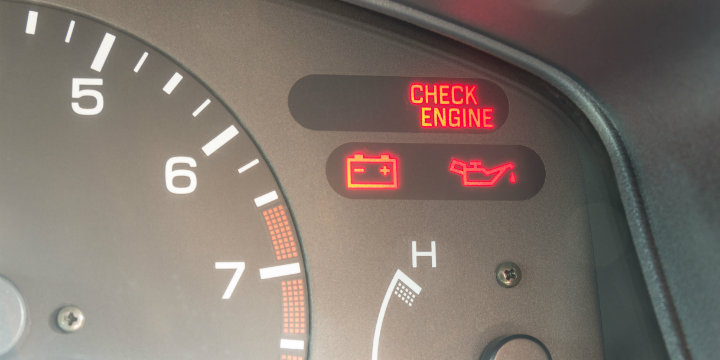https://www.jthughes.co.uk/Blog/View/Why-did-your-check-engine-light-come-on/3015
Why did your check engine light come on?
The engine management light, or check engine light, might be the last thing you want to see illuminate on your car’s dashboard, but it’s an invaluable feature that could help to save your vehicle’s engine from serious damage – so long as you heed the warning sign and seek professional advice immediately.

While modern engines are far more robust and enduring than their predecessors, faults do occur, so the opportunity to have a mechanical problem brought to your attention as soon as it happens is an irreplaceable feature that could help to prevent a minor problem from becoming a serious issue.
What is the check engine light?
It’s worth regarding the check engine light as an instruction rather than just a warning, as it’s easy to overlook warning lights on your car’s dashboard or to defer responding to them until another time. Unfortunately, the check engine light is more likely than most warning lights to indicate that a potentially serious problem exists within your vehicle’s engine, whereas some other warnings may not cause irreparable damage if overlooked for a time.
The engine management light is not, however, a diagnostic tool; it won’t tell you what, specifically, is wrong with your car. Accurate diagnosis is usually achieved by taking your vehicle to a motor technician who can obtain a reading from your car’s computer that will provide more information about the location of the fault, if not the actual cause of the problem itself.
What causes the check engine light to illuminate?
As a broad indicator of a problem within the engine, the check engine light will not be able to give you an instant diagnosis of what is wrong with your vehicle.
Motorists sometimes, understandably, shy away from having their vehicles checked as they fear that the engine management light means their cars are doomed to huge repairs that are going to drain their bank accounts or put them in debt, but in actual fact there are a wide variety of problems, some less serious than others, that could cause a check engine light to appear on the dashboard.
Some common causes include:
Ads by JT Hughes
Scroll to continue with content
• Faulty oxygen sensor
• Blocked diesel particulate filter
• Misfiring plugs
• Faulty catalytic converter
• Faulty coil pack
• Faulty fuel injectors
• Malfunctioning fuel pump
The costs of repairs range from nothing (if all that is needed is for the fuel cap to be tightened) to four figures. Ignoring the check engine light, however, could cause the charges to escalate further or even render your car unusable.
For this reason, it is imperative to seek professional advice as a matter of urgency so that the exact cause of the engine management light being illuminated can be determined, and appropriate repairs can be undertaken as soon as possible to prevent further damage from occurring.
Seeking professional advice.
Diagnosis of the problem causing the check engine light to appear is carried out by obtaining an error code from the vehicle’s computer via a code reader. While it is possible to obtain a code reader on the internet, understanding and interpreting the code is somewhat trickier unless you have extensive mechanical expertise.
An error code can even have multiple causes, meaning that inspection of the engine’s components and disassembly may be necessary, as well as the testing of different components to ascertain where the problem lies.
The logical solution is to bring your vehicle to JT Hughes so that we can carry out a thorough and detailed assessment of your car, so that the problem may be quickly identified and we can provide you with a clear estimate for the cost of fixing the problem. Motoring on and ignoring the check engine light is certainly not a wise course of action, even if your car seems to be operating normally.